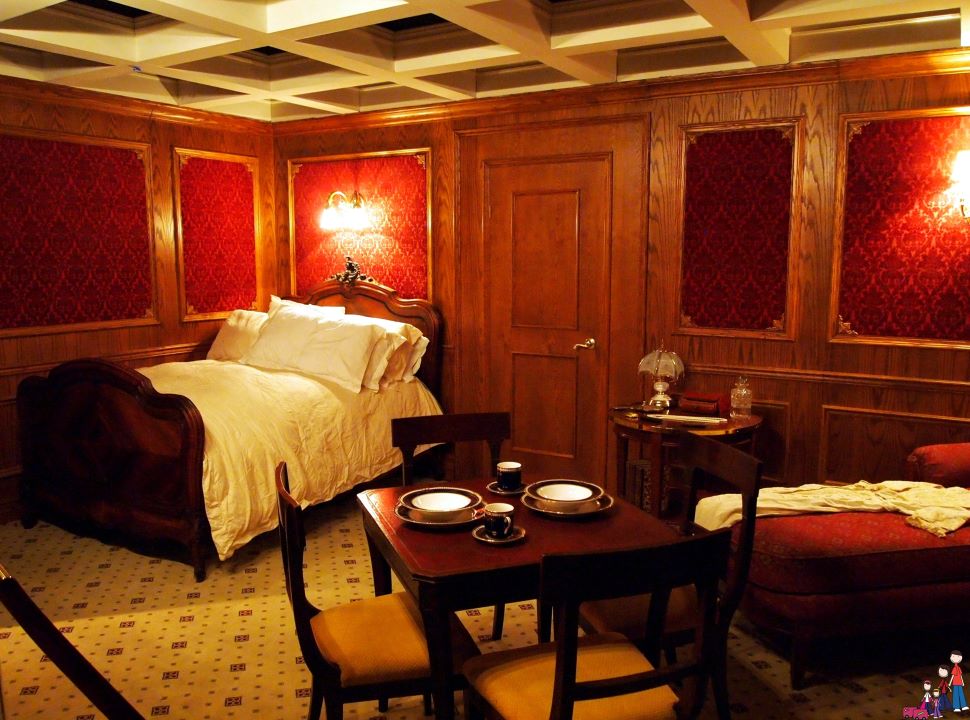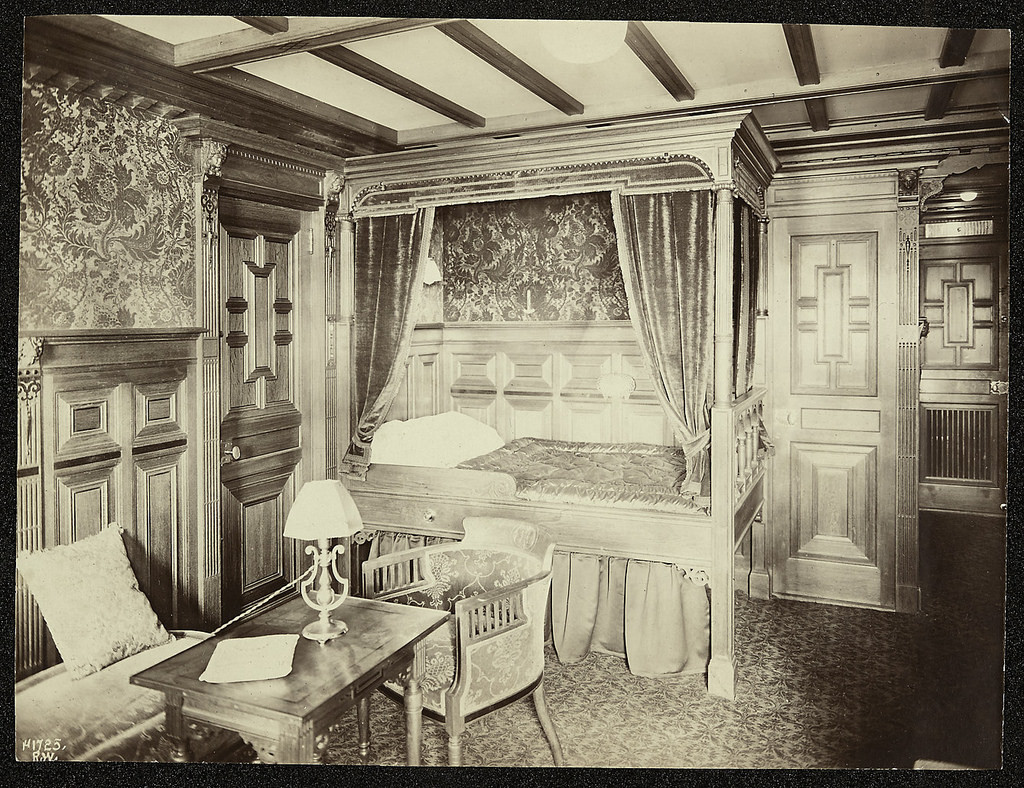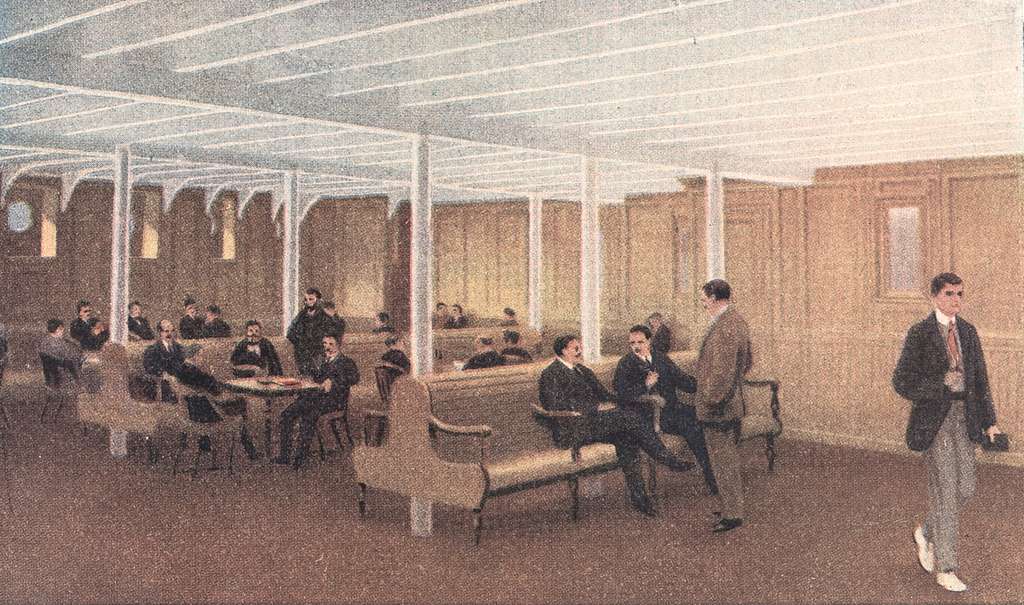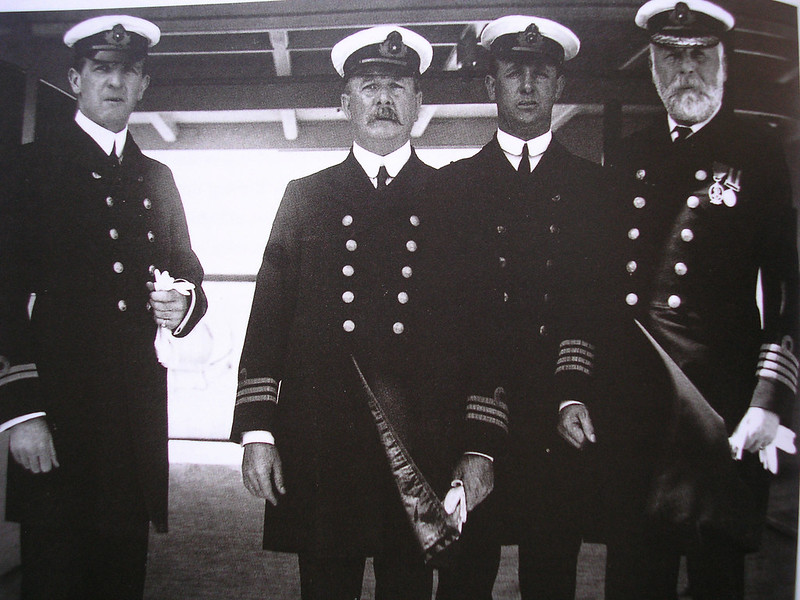More than a century ago, the RMS Titanic set sail on its maiden voyage, boasting luxury, innovation, and a promise of an unforgettable experience for all aboard. The ship was a floating marvel, a blend of luxury and cutting-edge technology that aimed to provide an unparalleled voyage across the Atlantic Ocean. As we journey back in time, let’s explore the various layers of life on this iconic vessel and the experiences that passengers encountered.
A World of Luxury in First-Class

The luxury experienced by first-class passengers aboard the RMS Titanic was unparalleled during its time. Lavish suites, expansive decks, and exquisitely designed dining areas were designed for these wealthy travelers. They enjoyed an environment exuding elegance and sophistication, featuring impeccable service.
On the Titanic, the first-class experience redefined luxury. It boasted veranda cafes, a splendid smoking room, a luxurious restaurant, a grand dining saloon, and an exclusive reading and writing room, far surpassing the facilities available on rival ships of the time.
Dining in first class was an experience of unmatched grandeur. The dining room, the largest ever seen on a ship, featured live orchestral performances that complemented the exquisite décor. The furniture, intricately carved in oak, mahogany, and sycamore, exemplified the attention to detail and luxury provided.
Passengers indulged in lavish dishes like oysters, salmon, chicken, lamb, duck, and squab. Steak lovers could savor options like filet mignon and sirloin, offering a variety of sumptuous choices.
After these delightful meals, a different scene unfolded based on social traditions. Men typically gathered in the smoking room for conversations and relaxation (women weren’t allowed there). Meanwhile, women would head to the lounge for chats.
For the more active passengers, a range of activities awaited. Deck games such as shuffleboard, access to a gym, squash courts, and a swimming pool catered to those seeking recreation and exercise. Additionally, passengers could enjoy leisurely games like chess and backgammon on the expansive decks.
The pinnacle of luxury on the Titanic was its 39 private suites, situated at the top of the ship. These suites offered opulent accommodation with two large bedrooms, walk-in wardrobes, a bathroom, and a spacious living area for hosting guests. The cost of these lavish suites reached up to £870, a staggering amount that, in today’s terms, would equate to approximately £79,000.
The first-class experience on the Titanic was not just a journey but a display of affluence and indulgence, offering an unprecedented level of comfort, service, and luxury that set new standards for transatlantic travel.
Comfort and Style in Second Class

Second-class accommodations on the Titanic were an embodiment of comfort and style, offering passengers a dignified and refined experience, albeit less opulent than the first-class quarters. In this tier, well-appointed cabins greeted passengers. Tastefully designed common areas enhanced their journey across the vast ocean with utmost comfort.
Comprising mainly tourists and professionals like teachers and clergy, the second-class passengers also included a team from Harland and Wolff and some of the staff who served the first-class passengers, such as chauffeurs and nannies. Despite not experiencing the grandeur of the first class, these individuals were on a journey that promised comfort and quality service.
The second-class accommodations featured cabins with bunk beds, accommodating approximately 550 passengers. Although these cabins lacked private bathrooms, they were equipped with sinks, and mirrors, and received daily changes of bed linen, maintaining a standard of cleanliness and comfort.
Passengers in second class had access to various amenities, including a spacious outdoor promenade, a well-appointed smoking room, a library, and a dining room where afternoon tea and coffee were served. The dining room, designed to seat nearly 240 people at once, provided an elegant dining experience accompanied by the tunes of a pianist. The furniture, adorned in mahogany with crimson red upholstery, along with pivoted lights, contributed to the sophisticated atmosphere.
While not as luxurious as the first-class experience, the second-class accommodations on the Titanic offered a comfortable journey across the Atlantic, presenting a space where passengers could enjoy quality amenities and a sense of elegance during their voyage.
Sharing Stories in Third Class

The third-class experience on the Titanic was marked by hope and a strong sense of community. Primarily comprising immigrants seeking a new life in America from diverse regions like Ireland, England, Scandinavia, Eastern Europe (including Jewish migrants), and even Lebanon, these passengers found themselves united in their shared aspirations for a better future.
Many passengers traveled alone or in small family units, seeking new opportunities in America. Notably, several mothers journeyed with their young children, joining their husbands who had previously ventured to the United States to secure jobs and send for their families.
The White Star Line offered modest comforts to their steerage passengers, providing third-class passengers with separate dining facilities and individual cabins, unlike the dormitory-style arrangements typical on other liners. Despite the efforts to offer a degree of comfort, restrictions were in place, confining third-class passengers to their designated areas on the ship, leading to challenges during the chaotic moments following the collision, where some passengers found themselves trapped below decks due to closed gates, hindering their access to safety.
The heart of the third-class experience was the general room, where passengers got together, shared stories, and formed bonds. Evenings were filled with the sound of music as passengers made their own tunes on the piano. Additionally, a male-only smoke room, elegantly paneled and furnished in oak with teak furniture, provided a space for relaxation and socializing.
The dining experience for third-class passengers was in their own dedicated dining room, which could seat approximately 470 individuals across three sittings. The meals, though simple, were abundant, featuring dishes like rice soup, biscuits, roast beef, and fruit. This contrasted sharply with the expectations on most other ships, where third-class passengers were typically required to bring their own provisions for the entire journey.
Accommodations for over 1000 third-class passengers were basic, with cabins housing up to 10 people. These cabins were located in the noisier lower part of the ship, closer to the engines. The layout divided single men and women at the front and back of the area, with families positioned in the middle. However, resources were limited, with only two baths available for everyone in the third class, highlighting the contrast in facilities between the classes.
Despite the simplicity and limitations of their accommodations, the third-class passengers aboard the Titanic formed connections and shared in the hope of new beginnings, their diverse backgrounds creating a sense of community amidst the challenges of their transatlantic journey.
The Remarkable Crew

The crew of the Titanic consisted of nearly 885 members, among whom only 23 were female, emphasizing the predominantly male-dominated workforce. Hailing mostly from nearby English towns, a significant portion—724 crew members—came from Southampton. Unfortunately, the Titanic’s catastrophic sinking led to an overwhelming loss of life among the crew. Out of an estimated 908 crew, around 696 crew members were presumed dead, leaving a survival rate of only 212 individuals.
The crew’s wages varied according to their roles and the importance of their duties. At the helm was the captain, the highest-paid member, earning approximately $6,250 annually. The ship’s officers earned $45 to $125 monthly, while stewardesses and stewards received $17 per month.
The crew’s responsibilities were diverse and vital for the smooth operation of the ship. Divided into various departments and roles, these dedicated individuals executed tasks that ranged from maintaining the ship’s engines, navigating, and ensuring comfort and service for the passengers.
Among these responsibilities were duties performed by the engineering crew, which sadly all died with the ship. They bravely attempted to keep the essential machinery operational even amid the disaster.
The crew’s readiness was evident in their different roles: the 29 crew members with extra training overseeing daily operations, the engineers maintaining the ship’s engines, and the stokers ensuring the furnace’s operation. This elaborate team included personnel from greasers, to firemen, stewards, and bellboys, each contributing to the ship’s smooth functioning.
Many of the crew were among the passengers’ last lines of defense. From the stewards in the first- and second-rate facilities to those maintaining the public rooms and dining saloons, each member contributed to the well-being and upkeep of the ship, ensuring the passengers were well-served and the ship’s amenities were appropriately maintained.
Daily Routines and Social Interactions
Life aboard the Titanic was a blend of social interactions and personal pursuits. Passengers engaged in various activities, from afternoon teas to deck games and musical performances. Each day was full of moments filled with joy, conversations, and the awe-inspiring expanse of the ocean.
Unforgettable Memories and Legacy
The Titanic was not just a ship crossing the Atlantic; it was a floating cross-section of society where people from diverse backgrounds converged, sharing moments of joy and aspiration. The experience of life aboard the Titanic, filled with elegance, charm, and human connections, stands as a symbol of the beauty of a bygone era, leaving a mark on history and our collective imagination.












